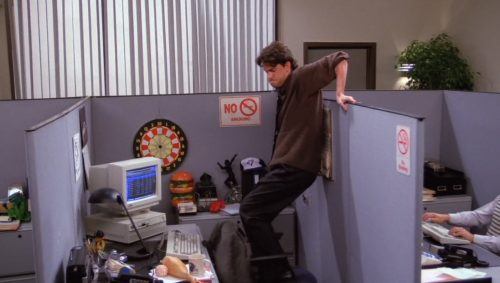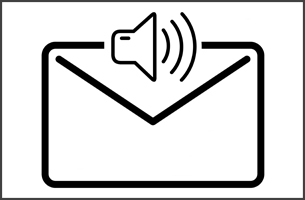Open for Business: Returning to the Office Post COVID-19
As countries around the world tentatively start relaxing their COVID-19 lockdowns, the time when we’re asked to pack away our makeshift desks and return to the office is edging nearer. Yet, in the absence of a vaccine, it’s unlikely that the offices we left will be the offices we head back to. Workplaces are going to have to adapt to the post-pandemic reality.

The new normal
Experts have suggested that we need a combination of short term fixes and long term modifications in order to prioritize safety in our new normal. Short term fixes are primarily designed to boost employee morale and confidence. They include maintaining social distancing, introducing hand sanitizing stations and even the use of ‘sneeze’ guards to separate colleagues from one another.
Long term modifications are likely to be more costly and will include structural changes to the workplace. It’s been widely speculated that the COVID-19 crisis will end the open-plan office experiment. And this does seem increasingly likely. Expect to see the return of 90’s cubicles and perspex offices keeping you apart from your colleagues.
Regardless of what happens, one thing is for sure. You won’t be swanning into the office on your first day back, having a coffee with colleagues in the communal kitchen and resuming business as usual. It’s going to take some getting used to and if you’re a business leader, you need to support your employees with the transition back to the office, just as much as you supported them transitioning out of it.

A welcome or reluctant return? Managing employees transitioning back
2020’s been a demanding year, so much for the roaring twenties! Your employees have been tasked with adapting to their remote workplaces, only to now be asked to transition back when they’ve just about settled in. These constant changes are difficult, but there are ways to help. Consider implementing the following practises to help colleagues get back in the swing of things:
1. Consider a phased approach
We all work differently and having an awareness of your teams preferred working style is essential for leaders during times of significant change. Some individuals will run back to the office with arms open wide, particularly those who struggle with the self-management aspect of being at home. Others however, will have enjoyed their home working experiments and may be reluctant to return.
Consider introducing a phased return for reluctant returners. Heading back to the office for two or three days a week will feel far more manageable as a first step and will maintain productivity, which may dip during the readjustment phase. For those with health concerns, publish the details of your social distancing plan and make sure they’re aware of what’s being done to protect them. After all, knowledge is power.
2. Make communication a priority
You might not be able to leap into a huddle room for your weekly 1-2-1 but that doesn’t mean it should fall by the wayside. That remote working solution you invested in during lockdown? It’s going to be your best friend in a socially distanced office. Schedule a WebMeeting with each of your direct reports to check-in. How are they feeling about coming back? Are they feeling productive or are they anxious about the possibility of contagion?
Once you’re aware of your team’s mindset, you’ll be able to work with them to build an action plan for their return. This might include an adjustment period for those directly affected by COVID-19, where the workload is gradually increased to a manageable level. Regardless, make sure all employees are aware of their priorities. This will help to avoid the endless email trails, cc’d content and FYI correspondence that can overwhelm and add extra frustration and stress.
3. Rebuild Morale
The human component of returning to office life requires as much focus as the practical one. The impact of the isolation is likely to have altered the dynamics of your team and it’s possible that some teammates won’t be returning at all. Your employees may suddenly feel removed from their colleagues and the organization.
High morale amongst staff has been proven to boost business performance, increase sales and reduce staff turnover countless times, so it’s vital you invest time in re-engaging your team. Promote achievements, encourage cross-functional collaboration and paint a positive vision of the future. When the time is right, and regulations allow, consider running team-building events to lift spirits and let off some steam.
4. Review essential workplace tools.
For many of us, it will take months to return to our pre-COVID-19 ways of working- if at all. The luckiest amongst us will already have communications systems in place that enable workers to seamlessly transition from the office to home and vice versa. For everyone else, there are likely to be deficiencies in the infrastructure employees need to perform their jobs.
Effective platforms to enable employee communication, connectivity and collaboration are essential to sustain business success. Look for a solution that offers all the tools you need in one simple to use platform. 3CX, with its integrated web conferencing, telephony, collaboration and chat capabilities offers exactly that. Our users have had the ability to work from anywhere using their office tools for years! Remember, although you’re starting to head back to the office, the next few months are likely to be a mix of office and remote work- particularly if a member of your team contracts COVID-19 and you’re required to self-isolated. Make sure you have the tools to see you through, regardless of what is thrown at you.
Embed your learnings
Our experiences during lockdown have not all been negative. On the contrary, for businesses, the great home working experiment has revealed a number of benefits. It’s uncovered deeper levels of collaboration, seen productivity rise amongst remote workers and reduced overheads. Smart businesses are going to want to retain these benefits moving forward.











